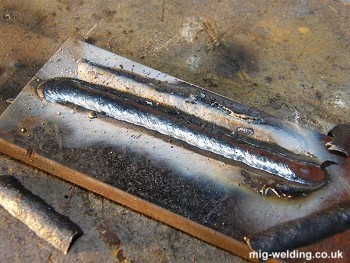Welding slag can be problematic during the arc welding process. If you didn’t know about whatwelding slag is then please read on. Slag is the leftover remains of the weld process that is a result of the flux having done its job. Slag is formed from the flux, decomposing into either a shielding gas, or deoxidizers, which form molten compounds that cover the weld while it cools to prevent oxidation of the freshly formed weld.

arc welding slag
Welding slag is usually gray, brown, or a charcoal black in color. It can be composed of several different oxides and it varies according to manufacturer. It can be thick or it can be paper thin. Some will release easily, and others will cling to the weld until it is etched with chemical or driven off by harsh mechanical means. Slag is great for protecting the weld while it cools, but once it has done it’s job, it has to be removed before the next pass. So, there are many ways to remove welding slag, but the most common method in years past was with a chipping hammer. A chipping hammer is a pencil like hammer that uses a flat blade on one end and on the other end, it forms a point. The chipping hammer is great for general purpose welding, and when combined with a wire brush, results are generally good. But certain fluxes can leave a hard to remove scale, or a flux that will not release easily. The problem that using a chipping hammer presents is that it can damage the weld face leaving tiny marks where the weld can fail. In such circumstances the next pass would not necessarily remove the marks creating a weak point or even a void in the weld. So many places have banned the use of a chipping hammer and instead specify the use of a needle scaler. Needle scalers are usually pneumatic driven and have in excess of 40 hardened needles that percussively beat the job surface when the trigger is pulled. This percussion is composed of small but harmless impacts several times per second of each free floating needle to the weld face. This percussive action pulverizes the welding slag and a smooth clean surface is the result left after the process. Another way to remove slag is with the use of a wire wheel. Various welding rods may require other forms of slag removal but when it comes down to it chipping hammers are the most economical. One final form of welding slag removal that works exceptionally well but is tedious and slow is a file. Any old time welder carries a file in their tool box. The file can get right into the small corners and toes of the weld that a dull chipping hammer, or wire brush cannot. It removes a small amount of metal as well, but that is of no concern. A file does the job and does it well, so don’t forget about that as a tool that works when nothing else will.
